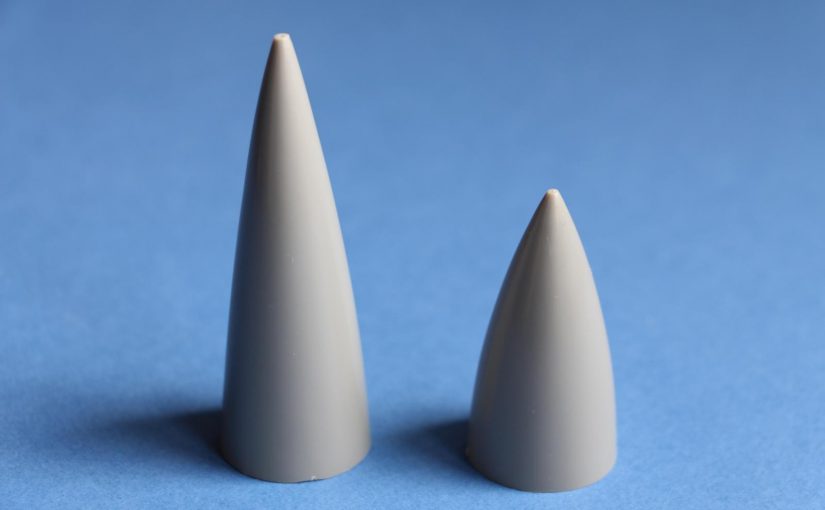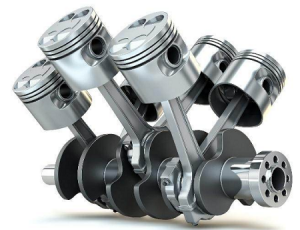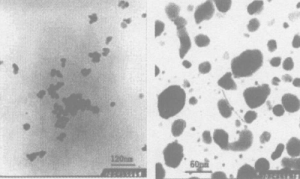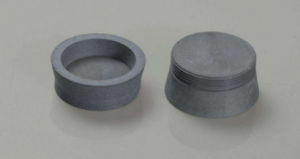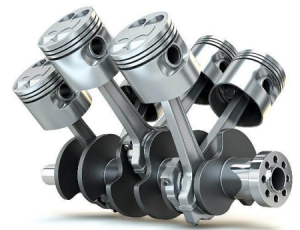In the mid-1980s, the United States developed an aerospace aircraft program that required both high-temperature tolerance and light mass. For this purpose, a variety of new high-temperature materials were developed, including advanced resin matrix composites, metal matrix composites, ceramic matrix composites, and carbon/carbon composites. Ceramic material is the preferred material for missile radome because of its excellent mechanical, thermal and electrical properties. The radome is the most widely used ceramic matrix composite material in missile structure.
Missile radome
The missile radome is located at the front end of the missile. Its function is to protect the navigation antenna from damage so that the missile can effectively hit the target. It is not only an important part of the aerodynamic shape of the missile but also the protection device of the antenna. During the flight of the missile, the radome should not only withstand aerodynamic heating and mechanical overload, resist the erosion of rain, sand, and other adverse working conditions, but also meet the stringent requirements of electrical performance proposed by the missile control loop. Therefore, the missile radome material should have the following properties:
- Excellent dielectric properties
In the guidance system, the transmission efficiency and aiming error of the radome are very sensitive to the dielectric properties of the material and its relationship with temperature and frequency. It is required that the material has low dielectric constant (10) and dielectric loss, and the dielectric properties do not change obviously with temperature and frequency.
- Good heat resistance and thermal shock resistance
The high Mach number of the missile can make the radome of instantaneous heating rate is as high as above 120 ℃ / s, so the material is required to have good thermal shock resistance, and the molecular structure of the material is required to be stable when the temperature is raised, and the material properties (such as dielectric properties and mechanical properties) change little to ensure that the radome can work normally when the temperature is raised.
- High-strength structural properties
The strength of the radome material should be high and rigid enough to satisfy the mechanical stress and bending moment caused by the longitudinal or transverse acceleration of the aerodynamic forces in the spacetime of the missile flying at high speed.
- Resistance to rain erosion
It plays a decisive role in the design allowable range of impact Angle and the sensitivity of aircraft in rain erosion.
- Low-temperature sensitivity
The dielectric properties and strength properties of general materials change obviously when they work at high temperatures. Therefore, the properties of the radome material, especially the dielectric properties and strength, are affected by the temperature change as little as possible.
Ceramic-based missile radome
Ceramic-based missile radome materials mainly include silicon nitride-based, silicon oxide-based and phosphate-based materials. Silicon nitride ceramics have not only excellent mechanical properties and high thermal stability but also low dielectric constant. Its decomposition temperature is 1900 ℃, its erosion resistance is better than fused silica, and it can withstand 6 ~ 7 Ma rating of flight conditions. Silicon nitride ceramic composite radome is one of the main research targets in various countries, which has been identified as the most promising radome material by the test of the Georgia Institute of Technology. Yttria Stabilized Zirconia (YTZ), also known as yttria-zirconia, is the strongest ceramic material. This material offers the highest flexural strength of all zirconia-based materials, and the research on zirconia-based materials as missile radome is in progress.
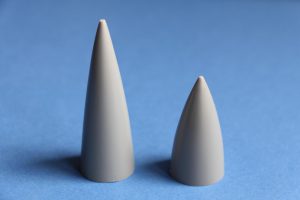
- Silica-based material
Because of the high flying Mach number of the missile and the relatively long heating time, if the radome of the medium-range missile is made of a single quartz ceramic material, it cannot meet the bearing requirement of thermal stress. In order to meet the requirements of medium and long-range ground-to-ground tactical and strategic missile radome, quartz glass, high-silica puncture fabric and orthogonal tri-directional quartz fabric reinforced silica matrix composites have been developed and successfully applied.
- Phosphate-based materials
Phosphate matrix composite material is a kind of Russian characteristic permeable material, which is made by impregnating cloth or fabric with a phosphate solution and then curing under pressure. Aluminum phosphate has stable performance in 1500 ~ 1800 ℃. At present, such materials have been used in cruise missiles, anti-missile missiles, tactical missiles and space shuttles. The most obvious disadvantage of phosphate is that it is highly hygroscopic, so the surface of the composite material needs to be coated with an organic coating for moisture-proof treatment.
- Silicon carbide ceramic matrix composites
Silicon carbide ceramic matrix composites have a series of excellent properties, such as low density, high-temperature resistance, ablation resistance, erosion resistance, and oxidation resistance, and it has a wide application prospect in the field of aerospace. Since the late 1980s, the United States has successfully developed a series of C/SiC, SiC/SiC ceramic matrix composites, which can be applied to the re-entry nose cone of missiles, the front end of wings and other heat-resistant structures.
Please visit http://www.samaterials.com for more information.
